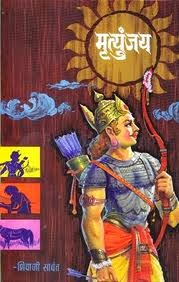Movie Review: Dhobi Ghat
Dhobi Ghat literally means an open air laundromat. The washers or dhobis generally work in the open and wash the clothes from Mumbai's hotels and hospitals. It is located to Mahalaxmi station near the Saat Rasta roundabout. There are rows of open air concrete washing stands, each fitted with a flogging stone. It is currently the world's largest outdoor laundry.
The film Dhobi Ghat has an acquired taste which means you'll simply enjoy the film or it will be downright boring. Filmmaker Kiran Rao's deeply personal Dhobi Ghat has an atmospheric feel to it. By naming it "Mumbai Diaries", one can make out that the film has been primarily made for a film festival audience.
The film, as such, does not have a story--except four random lives which connect in Mumbai. An investment banker-cum-photographer Shai (Monica Dogra), the dhobi Zohaib/Munna (Prateik Babbar), the reclusive artist Arun (Aamir Khan) and homemaker Yasmin Noor (Kriti Malhotra). There are fleeting moments of happiness, pain and the eventual realization that the journey never ends. The struggle to survive and to connect is eternal. These people intersect in different spaces across the city--art galleries, bustling Mohammed Ali Road markets, sea-facing bungalows in Worli, the sunset at Chowpatty and Marine Drive, the narrow gullies in slums, the dhobi ghats and under construction high-rise apartments.
The fifth character in the film is Mumbai, a city bursting at its seams with migrants who remain anonymous, alienated, brutally indifferent and harshly helpful. Kiran Rao and her cinematographer Tushar Kanti Ray brilliantly create the scenes across Mumbai. There are few places in the film which overpower the presence of actors like Prateik Babbar and Monica Dogra at Mohammed Ali Road at the iftaar party during Ramzan.
The music by Oscar winning music composer Gustavo Santaolalla, though largely instrumental, playing mostly as background music is underutilized though it blends well with the placid pace of the movie. The film could do with some editing at a few places nevertheless that shouldn't rob the movie of its artistic merit. The costumes are realistic and the sets are well chosen.
At a running time of 95 minutes, filmmaker Kiran Rao shows us a different side of Mumbai which has rarely been seen in the movies despite most of us living in the city. The film is more like a video diary since it films rat killers, the gentle rumbling of commuter trains, the unrelenting Mumbai rains, the crowded markets, the disappearing Irani cafes, the city during Ganesh Chaturthi visarjan.
It wouldn't be wrong to say that Mumbai finally gets a film that actually represents its true hues and tints. Though it follows the pace of an atmospheric portrait, part video diary and Mumbai is the centre of the film's attention. It is probably the only city in the world where so many classes so closely amalgamate into a common river of sorrows, beauty or hope.
Summing it up, the film is worth watching once despite having a bunch of relatively unknown faces.
The film Dhobi Ghat has an acquired taste which means you'll simply enjoy the film or it will be downright boring. Filmmaker Kiran Rao's deeply personal Dhobi Ghat has an atmospheric feel to it. By naming it "Mumbai Diaries", one can make out that the film has been primarily made for a film festival audience.
The film, as such, does not have a story--except four random lives which connect in Mumbai. An investment banker-cum-photographer Shai (Monica Dogra), the dhobi Zohaib/Munna (Prateik Babbar), the reclusive artist Arun (Aamir Khan) and homemaker Yasmin Noor (Kriti Malhotra). There are fleeting moments of happiness, pain and the eventual realization that the journey never ends. The struggle to survive and to connect is eternal. These people intersect in different spaces across the city--art galleries, bustling Mohammed Ali Road markets, sea-facing bungalows in Worli, the sunset at Chowpatty and Marine Drive, the narrow gullies in slums, the dhobi ghats and under construction high-rise apartments.
The fifth character in the film is Mumbai, a city bursting at its seams with migrants who remain anonymous, alienated, brutally indifferent and harshly helpful. Kiran Rao and her cinematographer Tushar Kanti Ray brilliantly create the scenes across Mumbai. There are few places in the film which overpower the presence of actors like Prateik Babbar and Monica Dogra at Mohammed Ali Road at the iftaar party during Ramzan.
The music by Oscar winning music composer Gustavo Santaolalla, though largely instrumental, playing mostly as background music is underutilized though it blends well with the placid pace of the movie. The film could do with some editing at a few places nevertheless that shouldn't rob the movie of its artistic merit. The costumes are realistic and the sets are well chosen.
At a running time of 95 minutes, filmmaker Kiran Rao shows us a different side of Mumbai which has rarely been seen in the movies despite most of us living in the city. The film is more like a video diary since it films rat killers, the gentle rumbling of commuter trains, the unrelenting Mumbai rains, the crowded markets, the disappearing Irani cafes, the city during Ganesh Chaturthi visarjan.
It wouldn't be wrong to say that Mumbai finally gets a film that actually represents its true hues and tints. Though it follows the pace of an atmospheric portrait, part video diary and Mumbai is the centre of the film's attention. It is probably the only city in the world where so many classes so closely amalgamate into a common river of sorrows, beauty or hope.
Summing it up, the film is worth watching once despite having a bunch of relatively unknown faces.


Comments